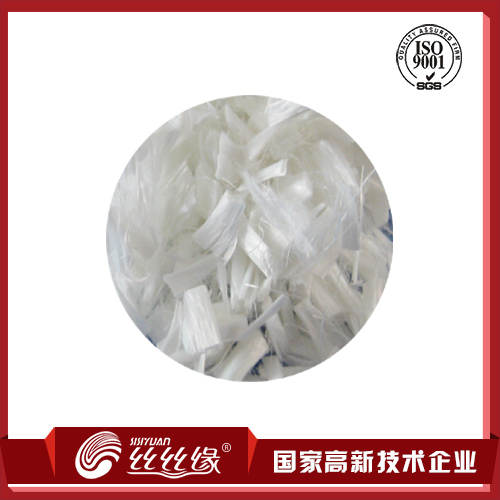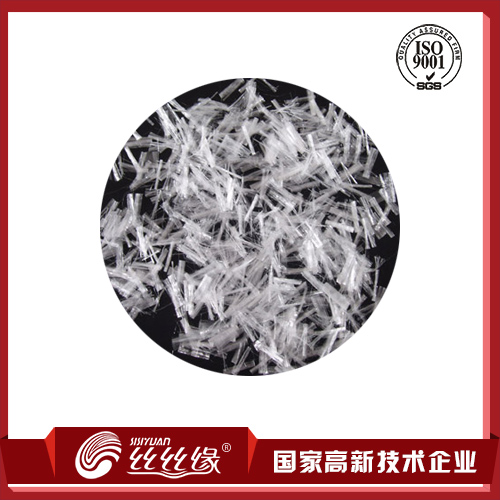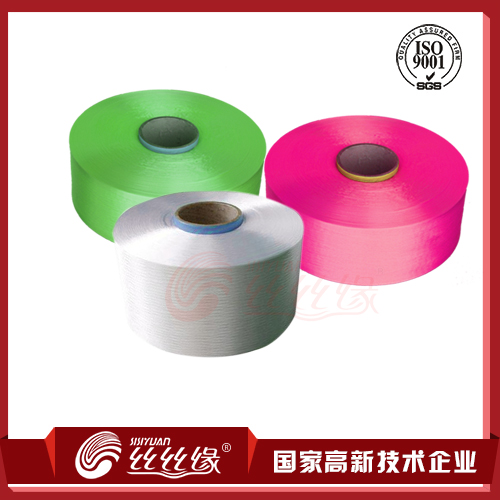
Polypropylene (PP) as a thermoplastic polymer in the plastic field has a very wide range of applications, due to the use of the catalyst and polymerization process, the resulting polymer properties, use is also different. PP has many useful properties, but it also lacks inherent toughness, especially below its glass transition temperature. However, by adding impact modifiers, the impact resistance can be improved.
1. PP homopolymer
Polypropylene (PP) as a thermoplastic polymer in the beginning of commercial production in 1957, is the first of the stereoregular polymer. Its historical significance is reflected in, it has been the fastest growing main thermoplastic, in 2004 its total output reached 3 million tons. It has a wide range of applications in the field of thermoplastics, especially in the fiber and filament, film extrusion, injection molding and so on.
1.1 Chemistry and nature
PP is prepared by reacting a metal organic stereoregular catalyst (Ziegler-Natta type) such as δ-TiCl3- (C2H5) 2AlCl or TiCl3- (C2H5) 3Al (efficiency 300 to 900 g polypropylene / g TiCl3) The monomers are synthesized under controlled temperature and pressure conditions. Due to the different catalyst and polymerization process used, the molecular structure of the obtained polymer has three different types of stereochemical structure, the number is not the same. These three structures refer to isotactic polymers, syndiotactic polymers and random polymers. In isotactic polypropylene (the most common commodity form), methyl groups are on the same side of the polymer backbone, and this structure is easy to form crystalline. The isotactic form of crystallinity imparts its excellent resistance to solvents and heat resistance. The catalyst technology used during the previous decade has minimized the formation of non-isotactic isomers, eliminating the need for separation of valuable random components, simplifying the production steps. There are two kinds of polypropylene production process: one is the gas phase method; one is the liquid propylene slurry method. In addition, there are some old slurry process equipment in operation, they use a liquid saturated hydrocarbon as a reaction medium.
In contrast, high density and low density polyethylene have a higher density, a relatively low melting point and a lower flexural modulus, i.e., stiffness. These performance differences lead to different end uses. The rigidity and ease of orientation make the polypropylene homopolymer suitable for the production of various fibers and for the extension zone, and their high heat resistance allows them to be used to make hard high pressure vessels and appliances and automotive molded parts.
The main factors that affect the processability and physical properties of polypropylene homopolymers include: molecular weight (usually expressed as flow rate); molecular weight distribution (MWD); stereoregularity and additives. The average molecular weight of polypropylene ranges from about 200,000 to 600,000. The molecular weight distribution is usually expressed as the ratio of the weight average molecular weight () to the number average molecular weight () of the polymer. This formula is also known as polydispersity index.
The molecular weight distribution of a polymer has a significant effect on its processability and end-use properties. This is because the molten polypropylene is sensitive to shear, i.e., when the applied pressure is increased, its apparent viscosity decreases. The polypropylene with a wide molecular weight distribution range is more sensitive to shear than the narrow distribution, and materials with a wide range of molecular weight distributions are easier to process during injection molding. Certain specific uses, especially fibers, require a narrow range of molecular weight distribution. The molecular weight distribution is related to the catalyst system and the polymerization process. Commonly used peroxide in the reactor behind the extrusion process of chemical cracking, the molecular weight distribution range narrowed. This process is called the control rheology (CR) process.
Compared with polyethylene, isotactic polypropylene its unique molecular structure and spiral crystal lead to its molecular chain is more susceptible to light and heat oxidation degradation. Under normal processing and final use conditions, polypropylene is subjected to random chain breaking, resulting in reduced molecular weight and increased flow rates. All commodity grade polypropylenes contain stabilizers to protect the material during processing, providing satisfactory end-use properties. For special purposes, in addition to adding antioxidants and UV inhibitors, but also need to add other additives. For example, add a lubricant and an anti-blocking agent to the film formulation to reduce the coefficient of friction and prevent the film from sticking itself. Add antistatic to the packaging material to eliminate static charge. In order to increase transparency or shorten the model cycle, a nucleating agent is required. Homopolymer resins are usually classified by flow rate and end use. The flow rate depends on both the average molecular weight and the molecular weight distribution. Some special applications require a flow rate of up to 400 dg / min and a common product homopolymer flow rate in the range of 0.5 to 50 dg / min. The flow rate is usually the most important factor in determining the processing characteristics.
1.2 Processing and application
The excellent flow properties of polypropylene and a wide range of flow rates, as well as other unique polymer properties, combine to provide excellent processability. The lower flow rate meets the processing requirements of extruded tapes, ribbon filaments and monofilaments, as well as the tensile strength and low elongation of the finished product while maintaining sufficient transverse integrity so that the filament guide Of the split and dust flying to a minimum. In order to counteract their unique low transverse strength and fracture tendency (fibrillation), the higher degree of orientation of the film to the fiber products, such as: crude fineness of textiles, string and rope, usually require a flow rate of 7 to 20 range. The decorative tape product containing the blowing agent is extruded from polypropylene with a flow rate close to 10 so that the melt strength and orientation are properly balanced. This polymer is oriented at a moderate degree to produce a smooth surface similar to that of satin, and the product has sufficient lateral strength to retard the breakage. The extrusion of nonwovens and multifilament products requires a low viscosity, free-flowing material, and therefore, polypropylene having a high flow rate is used for these applications.
Casting PP film is used extensively for drawing artwork. In addition, the film can be biaxially oriented and thermally variable, so that with excellent mechanical properties and thermal properties, applied to a variety of performance laminates and packaging materials. The tube can be processed into a coextruded blown film and a single layer using a tubular water-cooled process. Extrusion sheets for thermoforming require the use of low velocity formulations of the material to give sufficient melt strength. When using PP extruded profiles, the lower flow rate processing performance is always better. Profile extrusion is usually limited to a smaller cross-section so that water can be used to ensure that the product has sufficient toughness. PP can also be extruded into tubular products such as beverage pipettes and drinking water pipes. PP is also used in cable coating.
In the amount of extrusion after the injection molding process is very suitable for the characteristics of polypropylene. PP good flow performance and tough mechanical properties, are used to produce many different types of products with inherent tough mechanical properties. Good processability and excellent resistance to stress fracture properties produce excellent molded hoods. In general, low velocity formulations are used to produce thick-walled products and those that require toughness. High velocity materials are used to produce thin-walled parts and products that require rapid machining.
1.3 market
PP homopolymer can use a variety of processing technology, the production of a wide range of products.
Extruded products are the largest market for PP consumption, while textile fibers and monofilament are among the largest. For a long time, PP has been the main raw material for making fibers, because of its coloring ability, abrasion resistance, chemical resistance and favorable economic conditions. Oriented and non-oriented films occupy the second largest share of the extruded market and continue to grow.
Next, the injection of plastic products is the second largest market for PP homopolymer, including containers, sealers, automotive applications, household goods, toys and many other consumer products and industrial end use. Many blown containers use polypropylene because of its good moisture barrier performance and enough fine degree. In view of the new demand for future plastic products, PP homopolymer will continue to grow. Good economic conditions, good mechanical properties and light weight, strong coloring ability and ease of processing and other characteristics, will make PP continue to be the first choice for many applications in this century materials.
2. Impact-resistant PP copolymer
PP has many useful properties, but it also lacks inherent toughness, especially below its glass transition temperature. However, by adding impact modifiers, it can improve its impact resistance. The traditional improvement is elastomer, usually ethylene propylene rubber. It is generally believed that rubber particles throughout the semi-crystalline polypropylene matrix can form many stress concentration points at the interface to prevent local deformation and breakage. The impact modifier has been added at the time of blending. Recently, field synthesis of elastomeric components has been commercially important. Also, a new series of impact modifiers are being used to replace ethylene propylene rubbers, namely Flexomer polyolefins, Exact elastomers and Insite polymers. These are olefin polymers that fill the gap between very low density polyethylene and conventional EPR elastomers.
2.1 Chemistry and Performance
Isotactic PP homopolymer, which is polymerized from propylene catalyzed by the Ziegler-Natta catalyst system. Ethylene-propylene rubber components are synthesized in a series of reactors, either pre-purchased and then blended with PP homopolymer in an extruder. The resulting impact polypropylene is sold after granulation. On-site impact resistant PP copolymers can be used to precisely control their important properties by selecting the appropriate catalyst composition and reactor conditions. The composition of the catalyst and the reactor conditions determine the crystallinity of the matrix resin, the composition and number of the rubber components, and the overall molecular weight distribution.
Impact-resistant PP is one of the lightest thermoplastics with a density below 1, and the price per pound is lower than PET, PBT, high impact polystyrene and ABS. In terms of specific capacity, the cost per unit volume of impact resistant PP is lower than that of those resins and polyvinyl chloride (PVC). Only HDPE in this regard worthy of rivalry. Impact-resistant PP is usually processed at moderate temperatures in the range of 350 to 550 ° F. The impact polypropylene copolymers have a broad spectrum of melt flow rates, typically ranging from less than 1 to about 30. The resin with the highest melt flow rate is usually made by "less viscous" material with a lower melt flow rate. That is, the material from the reactor after a step in the reaction, reducing the average molecular weight, resulting in higher melt flow rate of the product. The impact polypropylene copolymer has a high resistance to chemical and environmental stress rupture. After treatment, the material can have excellent Izod impact strength and lower Gardner impact performance. The cantilever impact strength ranges from 0.5 to more than 15 feet per pound and the Gardner impact strength ranges from 15 to 300 inches per kg at -40 ° F.
The rubber component provides impact strength to polypropylene, but reduces the stiffness and heat distortion temperature of the impact polypropylene relative to the homopolymer. The filler-resistant impact polypropylene copolymer can tolerate higher temperatures without deformation. The filler is generally glass fiber. Mica, talc and calcium carbonate. The end users of these polymers should be aware that there is a trade-off between the different melt strength, melt flow rate, stiffness and heat distortion temperature for each product.
2.2 Use
The main commercial use of impact polypropylene is used in automotive, household goods, appliances in the injection molding. Its impact resistance, low density, coloring ability and processability make it an ideal material. The medium impact resistant resin grades with higher melt flow rates have high flow properties, which are particularly useful when injecting large parts such as automotive panels.
High impact resistance With low melt flow rate of the resin (usually less than 2), can be converted into excellent puncture resistance of the film, the film's impact resistance and resistance to steam sterilization, suitable for disposable medical waste bags. The extruded sheet can be machined into large and thick parts by thermoforming, such as the guards in the automotive industry and the trunk of the car. The mechanism of the elastomer component to improve the impact resistance of polypropylene can induce stress whitening when the material is impacted. Most uses are based on the dispersion of the elastomeric components in the polypropylene matrix. Based on the opposite concept, a new bumper is being developed. The result is the formation of a molecular composite structure.
Annotations
Polypropylene propylene polymer English abbreviation PP homopolymer Polymeric polymer formed by a monomer known as homopolymer.
Polymer macromolecules are those substances that are particularly large in molecular weight. Common molecules, we call them small molecules, usually composed of several or dozens of atoms, the molecular weight is also between dozens to hundreds of. If the molecular weight of the water molecule is 18, the molecular weight of the sulfur dioxide is 44. Polymer is different, its molecular weight is at least greater than 10,000. Polymeric molecules are usually composed of thousands, tens of thousands or even hundreds of thousands of atoms, and its molecular weight is tens of thousands, hundreds of thousands, or even billion to calculate. Polymer "high" refers to its high molecular weight.
Polymer polymer is divided into natural macromolecules and synthetic polymers, natural rubber, cotton and so belong to the natural polymer. Synthetic polymers mainly include: chemical fiber, synthetic rubber and synthetic resin (plastic), also known as the three synthetic materials. In addition, most of the main components of coatings and adhesives are synthetic polymers. Synthetic polymers are also known as polymers. Such as polypropylene, polyethylene and so on.
Copolymer Two or more monomers or monomers and polymer polymerization between the polymerization is called copolymerization, copolymerization of the product is the copolymer. Split block copolymers, graft copolymers, random







